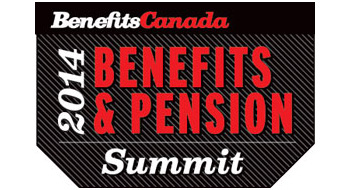

How do you create, implement and measure an effective wellness strategy? Three employers weighed in at Benefits Canada’s Benefits & Pension Summit in Toronto.
The panelists were: Melissa Barton, director, occupational health, wellness and safety, Mount Sinai Hospital; Doug Dickson, vice-president, HR, BP Canada Energy; Colleen Falco, director, HR services, Niagara Casinos. It was moderated by Kim Maxwell, account executive with Desjardins Insurance.
A philosophy of wellness
Niagara Casinos had a “cadillac” program, including biometric screening, but the results weren’t sustained and it was only for a select group, explained Falco. The company wanted to make the shift from a program of wellness to a philosophy of wellness. However, trying to “instill a culture of prevention and wellness” in the gaming industry—which is 24/7 and involves a great deal of shift work—can be a challenge, she added.
The company rolled out screening initiatives—including a diabetes clinic and cholesterol testing—to the broader employee group, and the results were surprising. “We had so many individuals across the country who didn’t know they were high risk,” Falco said. It also implemented health and safety programs, such as working with experts to develop stretching programs for dealers to reduce the number of repetitive strain injuries. Cases dropped by 80%, she added, which is significant from a WSIB perspective.
With 400 different job classifications and 4,000 employees, the diverse nature of Niagara Casinos’ workforce meant that it had to get creative when developing programs. For example, it has implemented hiking clubs and Zumba led by qualified instructors, as well as snowshoeing and ski clubs in the winter. Falco suggested tapping into the resources that already exist in your organization—for example, employees who are also Pilates or yoga instructors—and finding ways to let them become leaders without increasing the employer’s liability. “That costs very little,” she added.
Unhealthy healthcare
You’d think that, working in a hospital, employee health would always be top of mind. Yet there’s a lot of research to show that working in healthcare can be very unhealthy, Barton explained. For example, she noted that 46% of physicians are in the advanced stages of burnout. Mount Sinai’s focus on wellness began 10 years ago with the development of “healthy hospital” approaches, and the recent experience with SARS caused the healthcare industry to think more seriously about building resilience, she added.
To combat the increasing incidence of mental health claims, Mount Sinai Hospital has invested significantly in resilience-building tools for its staff. Programs include a poet-in-residence, an anti-discrimination campaign, compassion-fatigue support for healthcare staff and various committees to support employees’ emotional and physical well-being.
When it comes to mental health, how do you move from simple awareness to the next level? Barton believes it’s all about the organization’s commitment to making a change and sustaining it. “We think the social aspects of coming together as a community—that’s where you get the intrinsic motivation,” Barton added.
Urgent change needed
For BP Canada Energy, change wasn’t optional. In the wake of the Gulf of Mexico incident a few years ago—which led to a significant divestiture of its workforce—it was critical to demonstrate that BP wants to stay in Canada for the long term and will invest in its staff accordingly, Dickson explained.
In addition to fixing compensation, the company also looked at employee benefits and wellness. Partnering with various providers, it created social networks around wellness and instituted various initiatives—including annual health checkups for staff, which are mandatory for senior executives.
The screenings yielded four life-changing interventions in a short period of time, noted Dickson: two severe cancer cases and one severe heart intervention, as well as one heart issue that requires ongoing care. In fact, the impact was so great that employees made a video for the rest of the staff to explain why they, too, should participate.
BP also uses incentives to encourage employees’ involvement in the wellness program, including additional flex credits for participating. Employee can use these credits toward a wide range of rewards—anything from buying vacation days to getting a new kayak—but they only receive those credits if they re-enrol in the program the following year. “We want people focusing on the programs,” explained Dickson. “Incentives help to do that.”
All the articles from the event can be found on our special section: 2014 Benefits & Pension Summit Coverage.
